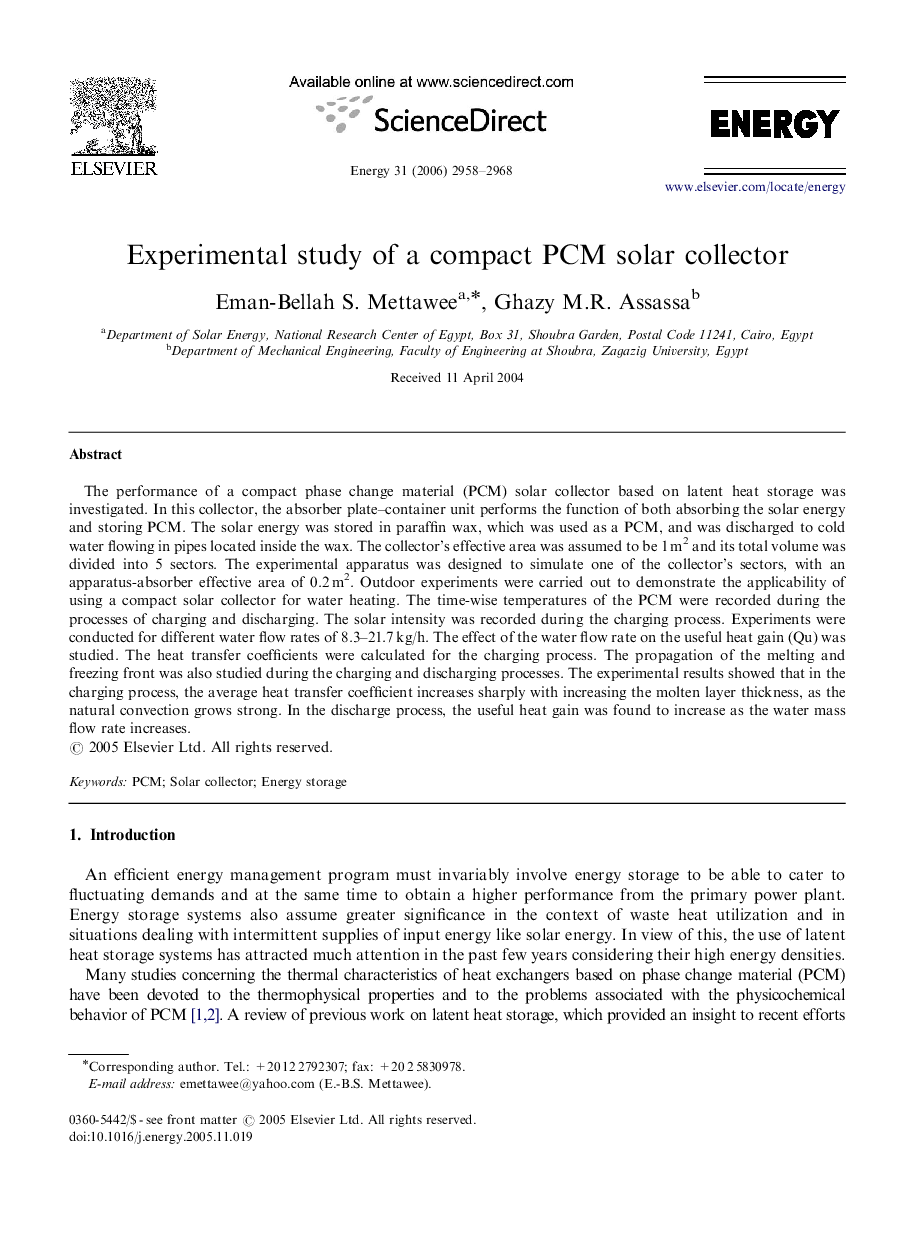| Article ID | Journal | Published Year | Pages | File Type |
|---|---|---|---|---|
| 1736330 | Energy | 2006 | 11 Pages |
The performance of a compact phase change material (PCM) solar collector based on latent heat storage was investigated. In this collector, the absorber plate–container unit performs the function of both absorbing the solar energy and storing PCM. The solar energy was stored in paraffin wax, which was used as a PCM, and was discharged to cold water flowing in pipes located inside the wax. The collector's effective area was assumed to be 1 m2 and its total volume was divided into 5 sectors. The experimental apparatus was designed to simulate one of the collector's sectors, with an apparatus-absorber effective area of 0.2 m2. Outdoor experiments were carried out to demonstrate the applicability of using a compact solar collector for water heating. The time-wise temperatures of the PCM were recorded during the processes of charging and discharging. The solar intensity was recorded during the charging process. Experiments were conducted for different water flow rates of 8.3–21.7 kg/h. The effect of the water flow rate on the useful heat gain (Qu) was studied. The heat transfer coefficients were calculated for the charging process. The propagation of the melting and freezing front was also studied during the charging and discharging processes. The experimental results showed that in the charging process, the average heat transfer coefficient increases sharply with increasing the molten layer thickness, as the natural convection grows strong. In the discharge process, the useful heat gain was found to increase as the water mass flow rate increases.
